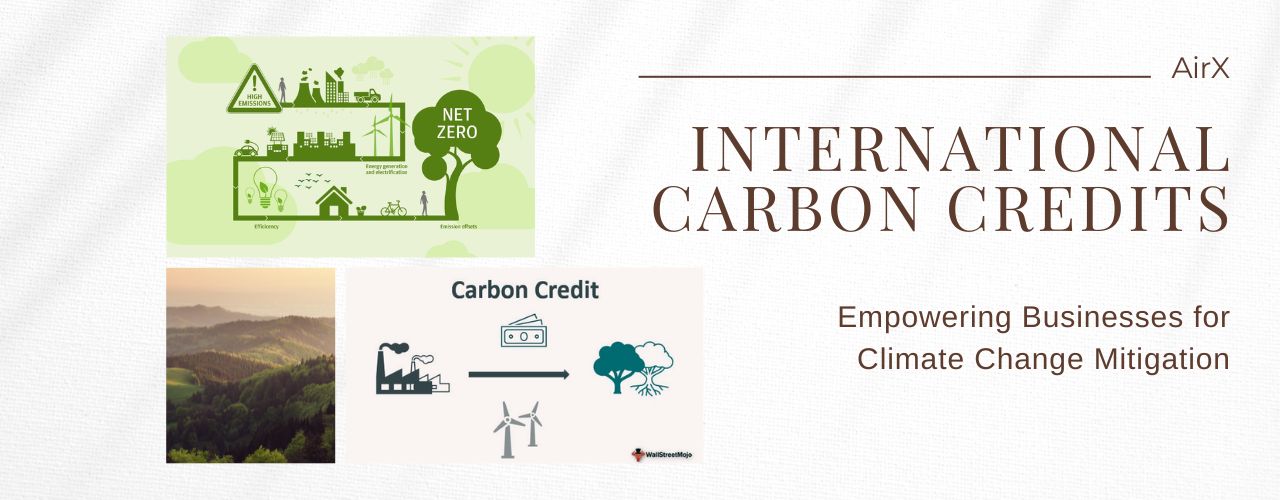International Carbon Credits: Empowering Businesses for Climate Change Mitigation

In the face of increasing global warming, international carbon credits have emerged as powerful tools for organizations to offset their carbon emissions. By participating in international carbon credit programs, businesses can actively contribute to global efforts to reduce greenhouse gas emissions and transition to a more sustainable future.
In this blog, we will delve into the concept of international carbon credits, their challenges and considerations, and the steps businesses can take to engage with these credits. Join us as we explore the potential of international carbon credits in empowering businesses for a greener world.
Understanding International Carbon Credit Mechanisms
International carbon credits play a crucial role in global efforts to mitigate climate change. They are mechanisms established under international agreements, such as the Kyoto Protocol and the Paris Agreement, to incentivize and facilitate emission reductions worldwide. By understanding the key aspects of international carbon credit mechanisms, businesses can actively participate in climate change mitigation and contribute to a more sustainable future.
International carbon credit mechanisms provide a framework for countries and businesses to collaborate in reducing greenhouse gas emissions. These mechanisms aim to create a global market for carbon credits, enabling the transfer of emission reduction efforts across borders. The Kyoto Protocol was the first international agreement to establish carbon credit mechanisms, and the Paris Agreement further reinforced these efforts.
There are various types of international carbon credits that businesses can engage with. One example is Certified Emission Reductions (CERs), generated from projects implemented in developing countries under the Clean Development Mechanism (CDM). Another type is Verified Carbon Units (VCUs), generated from projects under voluntary carbon offset programs, allowing businesses to voluntarily offset their emissions.
International carbon credit projects adhere to certain principles and requirements to ensure credibility and effectiveness. Additionality is a key principle, meaning that emission reductions achieved through projects must be additional to what would have occurred without the project. Additionally, projects must undergo rigorous monitoring, reporting, and verification processes to ensure transparency and accuracy of emission reductions.

By understanding the mechanisms behind international carbon credits, businesses can make informed decisions regarding their carbon offsetting strategies. Engaging in projects that generate high-quality carbon credits ensures that the emission reductions are credible and contribute effectively to climate change mitigation. Moreover, businesses can align their efforts with international agreements and frameworks, reinforcing their commitment to sustainable practices.
Challenges and Considerations in Utilizing International Carbon Credits
As businesses increasingly embrace international carbon credits as a means to mitigate their carbon footprint, several challenges and considerations arise. Addressing these challenges is crucial to ensure the effectiveness and credibility of carbon offset projects. Here are some key areas that require attention:
- Additionality and credibility of carbon offset projects:
International carbon credits must demonstrate additionality, meaning that the emission reductions achieved would not have happened without the project. It is important to verify that the project's activities go beyond business-as-usual practices and genuinely contribute to greenhouse gas reductions. - Market dynamics and pricing of international carbon credits:
The market for international carbon credits can be dynamic, influenced by factors such as policy changes, demand-supply dynamics, and evolving regulations. Businesses need to understand these dynamics and fluctuations in carbon credit pricing to make informed decisions regarding their carbon offset investments. - Monitoring, reporting, and verification of emission reductions:
Robust monitoring, reporting, and verification (MRV) mechanisms are vital to ensure the integrity and accuracy of emission reductions claimed through international carbon credits. Accurate measurement and reporting of emissions reductions are essential for maintaining the credibility of carbon offset projects. - Ensuring transparency and integrity in the carbon credit market:
Transparency and integrity are critical in the carbon credit market to prevent fraud and ensure that emission reductions are accurately accounted for. Verification by reputable third-party organizations and adherence to recognized standards and protocols help maintain trust and credibility in the market.

Navigating these challenges requires businesses to work with experienced carbon credit brokers or consulting services that specialize in international carbon credits. These experts can provide guidance on project selection, additionality assessment, market trends, and MRV requirements.
Furthermore, businesses should stay informed about evolving regulations and standards related to international carbon credits. Engaging in stakeholder discussions and participating in industry initiatives can contribute to shaping transparent and effective carbon credit mechanisms.
By addressing these challenges and considerations, businesses can maximize the benefits of international carbon credits while ensuring their efforts towards climate change mitigation are credible and impactful.
Steps for Businesses to Engage with International Carbon Credits
Businesses play a crucial role in mitigating climate change, and engaging with international carbon credits is an effective way to reduce greenhouse gas emissions. Here are the key steps for businesses to successfully participate in international carbon credit programs and initiatives.
- Assessing emission sources and reduction potential: Before embarking on carbon credit projects, businesses should conduct a comprehensive assessment of their emission sources. This involves identifying the main contributors to greenhouse gas emissions and evaluating the potential for emission reductions. It is essential to understand the baseline emissions and set realistic reduction targets.
- Identifying suitable international carbon credit projects or programs: Once businesses have assessed their emission sources, they can explore and identify suitable international carbon credit projects or programs to participate in. These projects can range from renewable energy installations to reforestation initiatives. The chosen projects should align with the business's sustainability goals and have a positive environmental and social impact.
- Engaging with carbon credit brokers or consulting services: Businesses may seek the expertise of carbon credit brokers or consulting services to navigate the complex landscape of international carbon credits. These professionals can provide valuable guidance in project selection, project development, and the overall carbon credit process. They can help businesses find reputable projects and ensure compliance with the relevant standards and regulations.
- Implementing and monitoring emission reduction activities: Once a business has selected a carbon credit project or program, it's crucial to implement emission reduction activities effectively. This may involve adopting sustainable practices, improving energy efficiency, or utilizing carbon-negative materials like plant-based plastics. Regular monitoring of emission reduction activities is necessary to track progress and ensure the desired environmental outcomes.
- Reporting and verifying emission reductions achieved: Accurate reporting and verification of emission reductions are integral to international carbon credit programs. Businesses need to provide transparent and credible documentation of their emission reduction efforts. This often involves third-party verification to ensure the accuracy and reliability of the reported emissions reductions.
By following these steps, businesses can effectively engage with international carbon credits and contribute to global climate change mitigation efforts. It's important to note that integrating sustainable practices, such as using carbon-negative materials as plant-based plastics, within the business operations before joining international carbon credit programs can further enhance the overall environmental impact and sustainability of the organization.'

By taking these steps, businesses can not only reduce their carbon footprint but also contribute to the global transition to a low-carbon economy and make a positive impact on the environment. Engaging with international carbon credits is a strategic and meaningful way for businesses to demonstrate their commitment to sustainability and take proactive measures in combating climate change.
>>> Learn more: The Role of Carbon Offset Brokers in Climate Action
Contact us
AirX is the world's first carbon-negative bio-material made from coffee grounds manufacturer.
We specialize in producing bio-based composites using recycled carbohydrates derived from by-products such as coffee grounds, coconut husk, husk, and bamboo. Our goal is to promote sustainability through the use of eco-friendly materials.
We are always here to help and provide the best service possible. If you have any questions or would like to receive advice and feedback directly from our sales staff, please do not hesitate to contact us. You can reach us through:
- Whatsapp: +84 969 742 950
- Email: [email protected]
We look forward to hearing from you!

